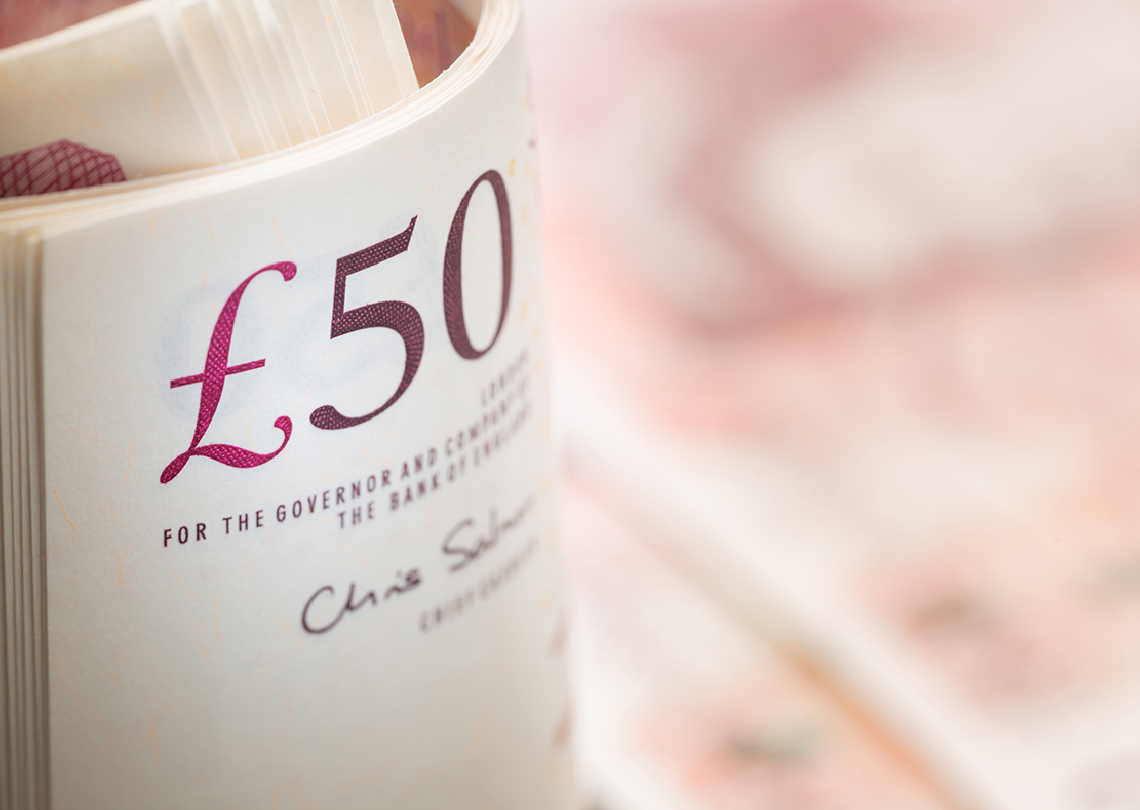The two ways for you to identify a counterfeit £50 note

After the turmoil of the last year, you could be forgiven for believing it has been an age since 2016, when the first £5 polymer (“plastic”) banknote was unveiled to the British public. The imminent release of the Alan Turing £50 note will complete a ‘full sweep’, as British paper currency officially transitions to polymer, and the former is phased out.
Alas, the awkward days of convincing the local shop keeper to accept your ‘completely valid’ note with a chunk missing, will finally be behind us. We’ve all been there.
In Glory’s Evolution of the £50 note’ video, you will see that aside from added durability, the £50 note has undergone visual changes from its predecessors. However, the added intricacy of design has a lot to do with security than simply aesthetics. This was one of the key reasons for moving from cotton-paper to polymer banknotes. Through time, cash has evolved technically - but so have the scammers and counterfeiters.
Below are the two methods to authenticate that the cash you accept is the real deal.
Method 1 – (Single notes)
To the untrained eye, counterfeit and genuine notes may be hard to tell apart. Attention to detail is key but knowing exactly what to look for is paramount. The Bank of England has created a detailed checklist that shows you exactly what to look for in the new polymer £50 note.
Learn more about the key features of the £50 note.
Method 2 - (Multiple notes)
Here’s where it gets tricky. While using the checklist is ideal to authenticate a few notes, its thorough, time consuming nature can often come across as mistrustful. Furthermore, you could find yourself being duped by a mixture of counterfeit and genuine notes.
When new banknotes are introduced, human error can have an impact on your business’ profitability when counterfeits slip through; after all your staff are not machines.
If only there were a machine that handled the counting and rejection of invalid notes in superhuman timing... Well, there is.
A cash recycler is an advanced cash handling device used in financial, retail and gaming establishments worldwide, to automate cash and enhance the in-house customer experience.
How does a cash recycler work?
This is dependent on the preferred currency, a cash recycler is calibrated to identify all the intricate security features of a range of notes.
All you simply need to do, is place the cash into the machine. This triggers a high-speed mechanism that feeds the banknotes through a range of sophisticated sensors that accurately recognise, count, and authenticate each and every banknote. The notes are quickly sorted, accepted or rejected before being securely stored in the cash recycler, ready to be dispensed. All this happens fast. Very fast. Much faster than is possible by hand, which means your customers can complete their transaction quickly and go on about their day.
How and where do I get a cash recycler?
Whether you are in the retail, hospitality or the financial industry, cash automation has been proven to accelerate the cash handling journey, cut queue times and enhance the in-house customer experience.
As a global market leader, Glory offers a range of cash handling solutions, from cash recyclers for the point of sale, through to back-office note counters and sorters. Glory has proven cash management solutions to improve the efficiency, security, and accuracy of your cash handling operations.
With the imminent launch of the new polymer £50 note, now is the time to look at how Glory can help you be ready for the future of cash.